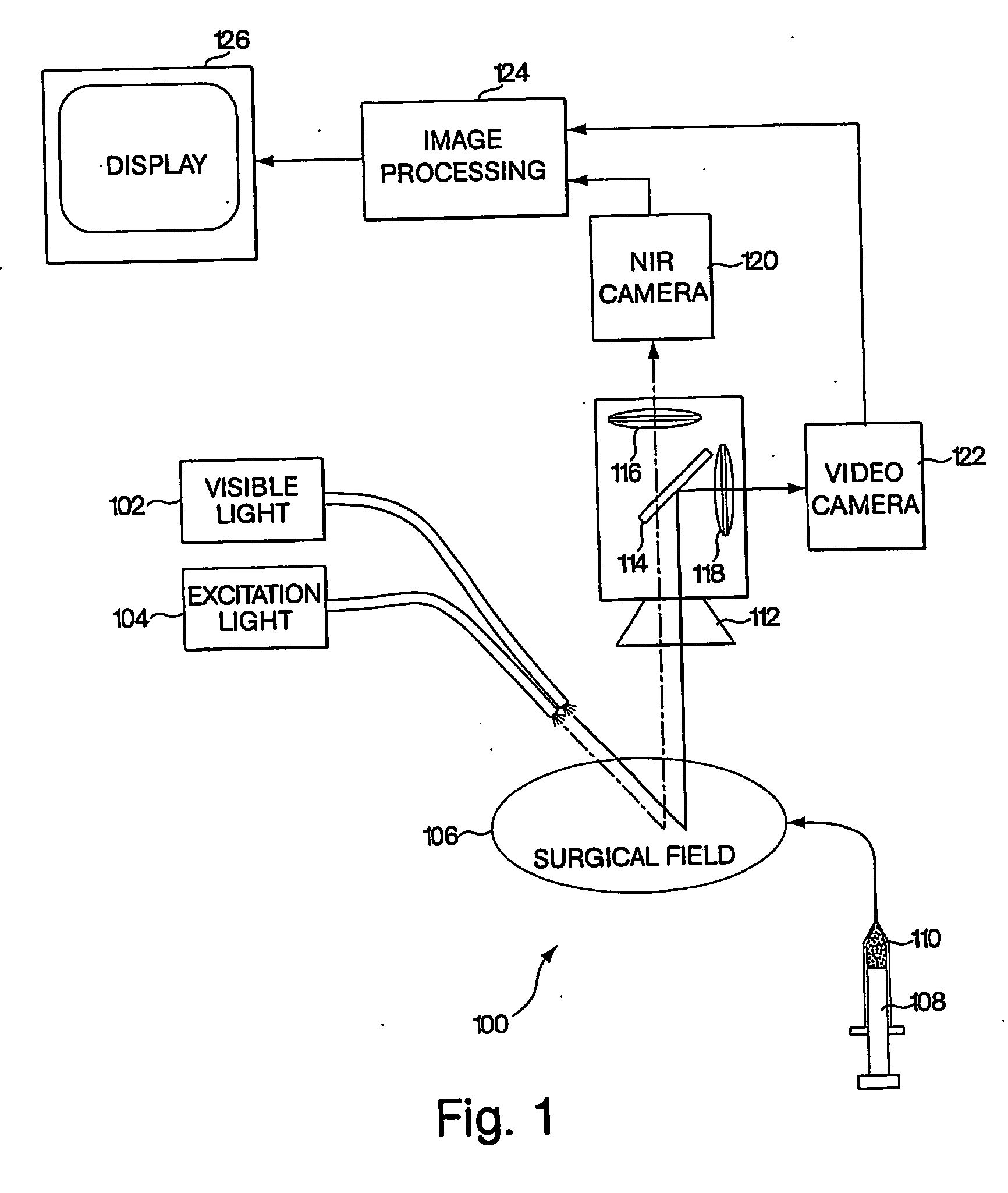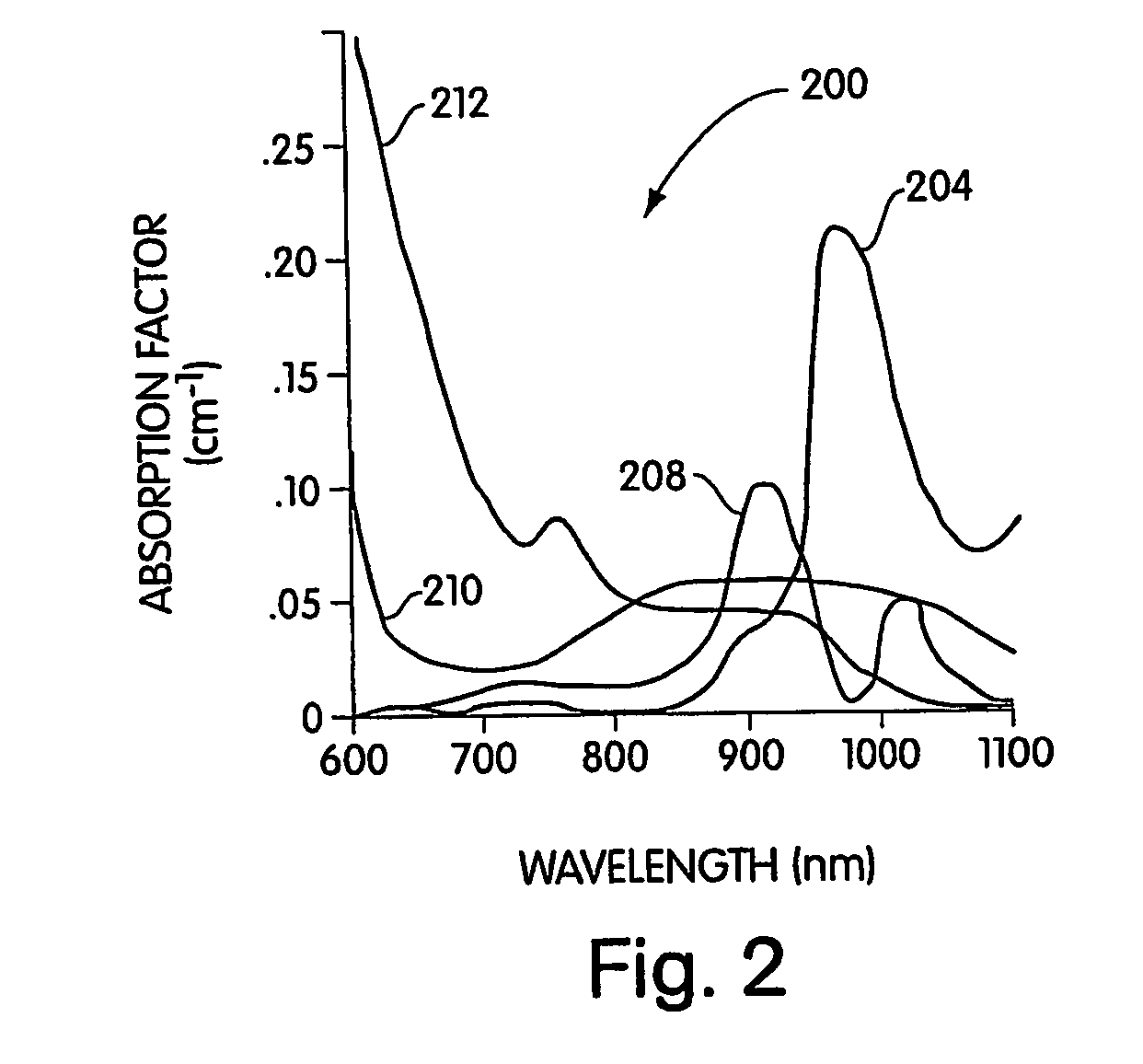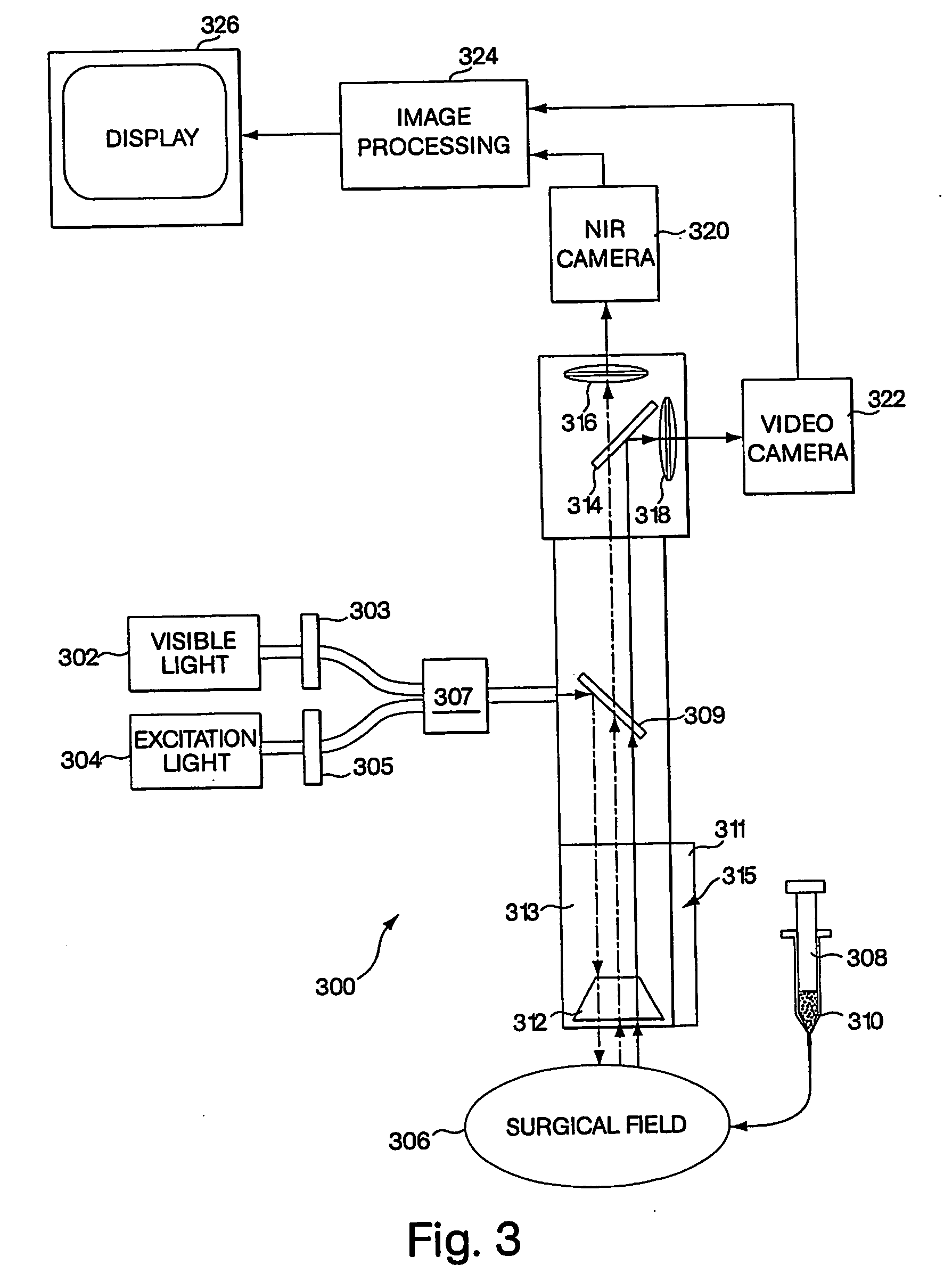Conjugated infrared fluorescent substances for detection of cell death
a technology cell death, which is applied in the field of conjugated infrared fluorescent substances for cell death detection to achieve the effect of enhancing tissue transmission
- Summary
- Abstract
- Description
- Claims
- Application Information
AI Technical Summary
Benefits of technology
Problems solved by technology
Method used
Image
Examples
example 1
Preparation of Annexin Conjugate
[0206] The N-hydroxysuccinimide (NHS) ester of IRDye78 (IRDye78-NHS) was purchased from LI-COR (Lincoln, Nebr.) and stored desiccated, under nitrogen, at −80° C. Recombinant human Annexin V was purchased from BDPharmingen (Catalog #556416; 100 μg in PBS at 1 mg / ml). The protein is preferably provided in a non-amine-containing buffer such as PBS. The conjugation reaction is less successful in Tris or other amine-containing buffers.
[0207] In general, NHS ester labelings in aqueous solution should be performed in the presence of an excess of NHS ester to nucleophile. The half-life of NHS esters in aqueous buffers at pH 7.4 is rather short. Therefore, one must typically use a high molar ratio of fluorophore to protein since water itself will compete for hydrolysis of the NHS ester. Human Annexin V has the following nucleophiles:
Total (27 nucleophiles): 1 alpha amine22 Lysines 1 Cysteine 3 Histidine
[0208] In the subsequent experiments, Annexin V was pr...
example 2
Vivaspin Filter Purification
[0210] A 10,000 M.W. Vivaspin 500 filter with a low protein binding polyethersulfone membrane from Vivascience (Cat. No. VS0101) was used. Maximum g force is 15,000.
[0211] The filter was pre-washed with 200 μL of PBS, vortexed at 15,000×g for 15 minutes, and the solution discarded.
[0212] The Annexin V sample was diluted with PBS to a final volume of 500 μL and placed in the sample chamber. The combination was vortexed at 15,000×g for 20 minutes. 5 μL of retentate remained in the top chamber.
[0213] The elutate was discarded, and 300 μL of PBS was added and vortexed at 15,000×g for 15 minutes. About 5 μL retentate remained in the top chamber. This step was then repeated.
[0214] 35 μL PBS was used to wash membrane and recover labeled protein. A preference has been observed for Annexin V to bear a single IRDye 78 label, even in the presence of an excess of labelling reagent.
example 3
[0215] U937 cells were grown in suspension (Medium: RPMI+10% heat-inactivated FBS). 1 mL of the suspension was incubated with 1.4 nM TNF-α for 90 min. at 37° C.
[0216] Conjugation using a 2:1 ratio of annexin to dye was performed during incubation. A filter was pre-washed with 200 μL of HBSS, vortexed at 15,000×g for 15 minutes, and discarded. The conjugated Annexin sample was diluted with HBSS to a final volume of 500 μL and placed in the sample chamber. The combination was vortexed at 15,000×g for 20 min, leaving ≈5 μL of retentate in the top chamber. The elutate was discarded, and 300 μL HBSS was added and vortexed at 15,000×g for 15 minutes, leaving ≈5 μL of retentate in the top chamber. 95 μL of HBSS was added and used to wash the membrane and recover the labeled protein. After incubation, the cells were spun at 1000×g for 1 min., the media was aspirated, and the remainder washed 2× at 1000×g for 1 min with HBSS after last wash. The cells were then resuspended ...
PUM
| Property | Measurement | Unit |
|---|---|---|
| Mass | aaaaa | aaaaa |
| Mass | aaaaa | aaaaa |
| Mass | aaaaa | aaaaa |
Abstract
Description
Claims
Application Information
 Login to View More
Login to View More - R&D
- Intellectual Property
- Life Sciences
- Materials
- Tech Scout
- Unparalleled Data Quality
- Higher Quality Content
- 60% Fewer Hallucinations
Browse by: Latest US Patents, China's latest patents, Technical Efficacy Thesaurus, Application Domain, Technology Topic, Popular Technical Reports.
© 2025 PatSnap. All rights reserved.Legal|Privacy policy|Modern Slavery Act Transparency Statement|Sitemap|About US| Contact US: help@patsnap.com



